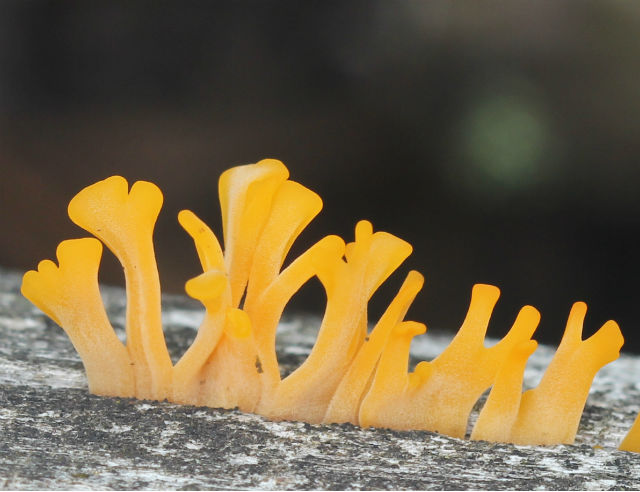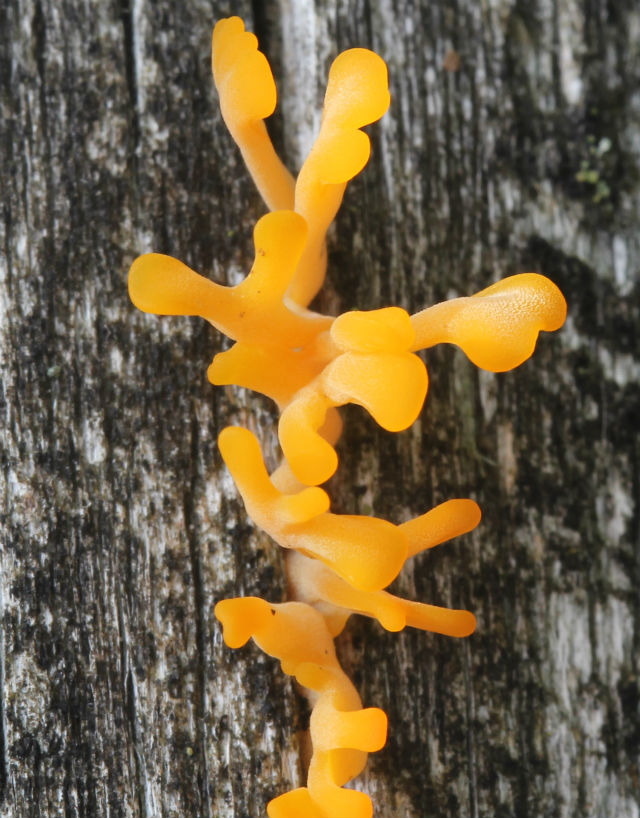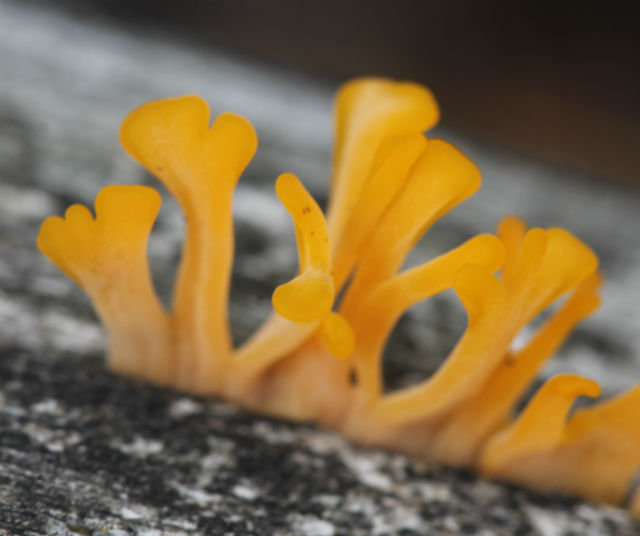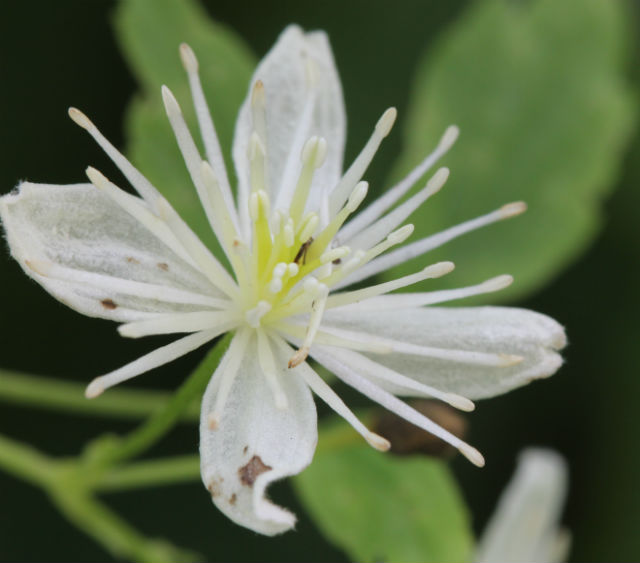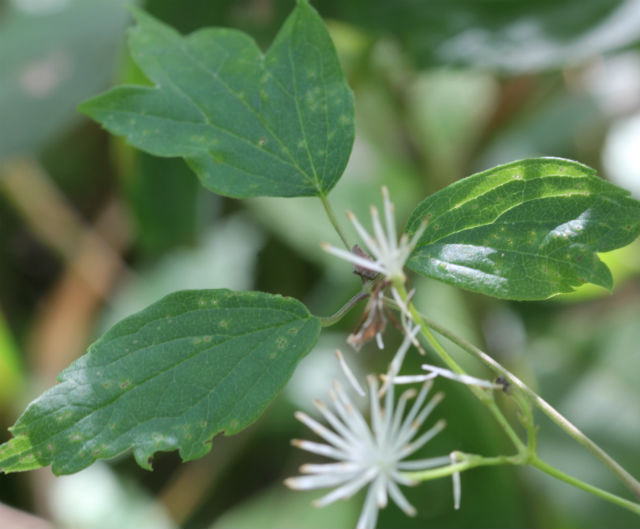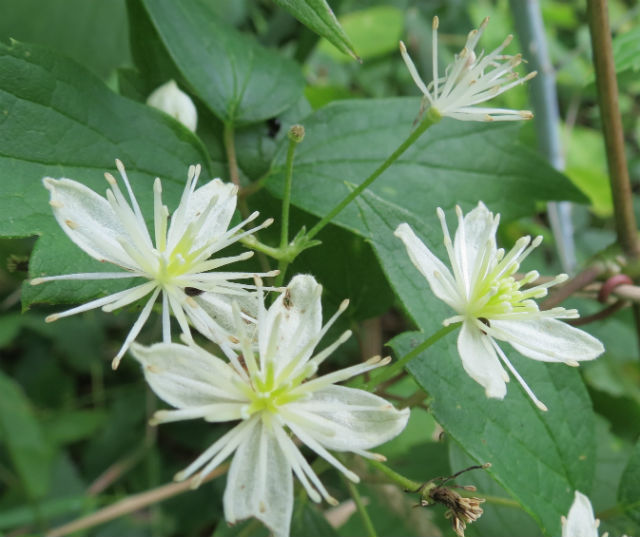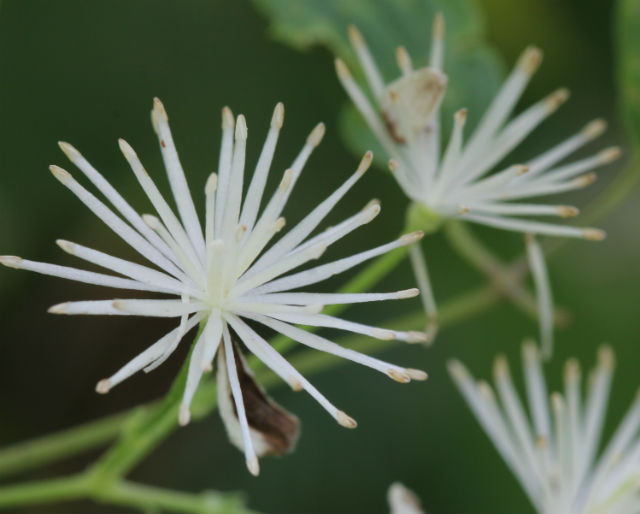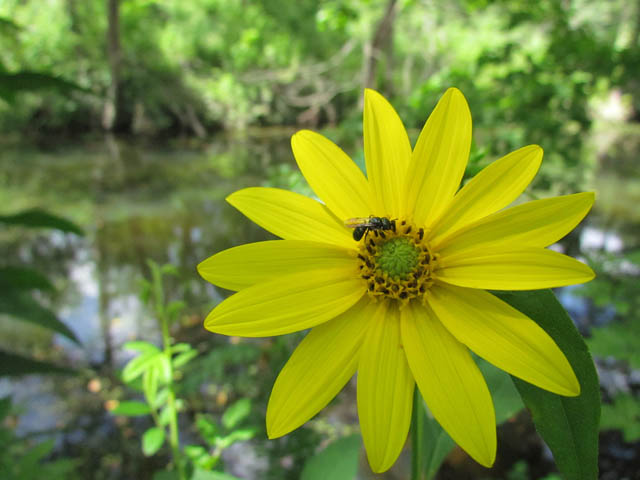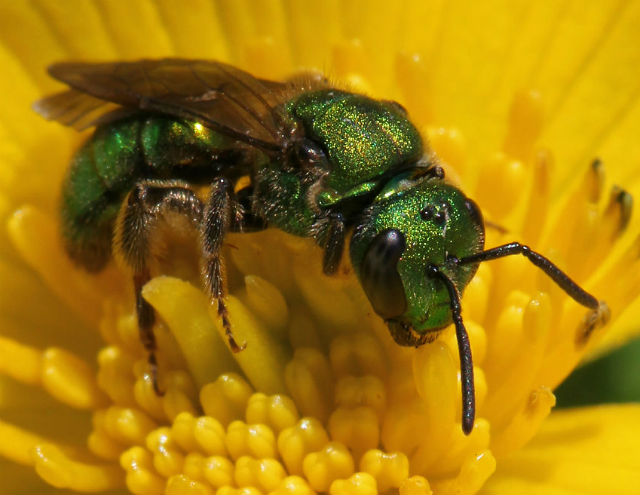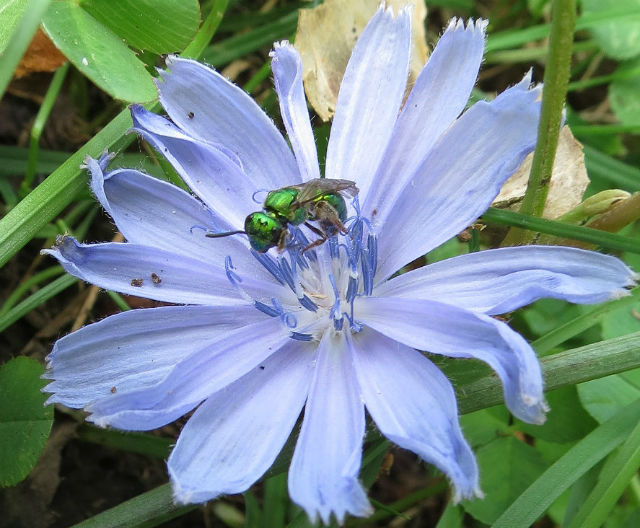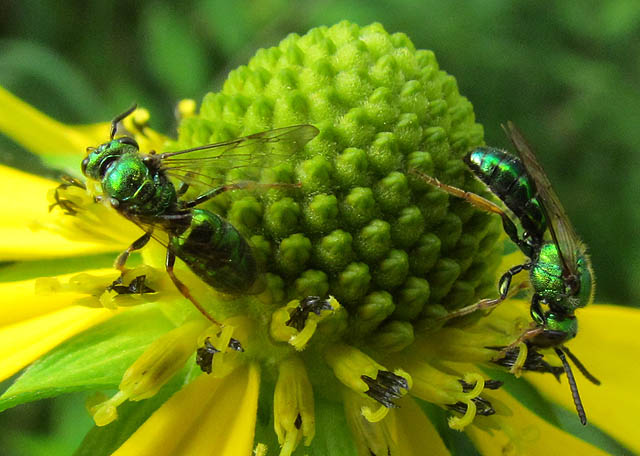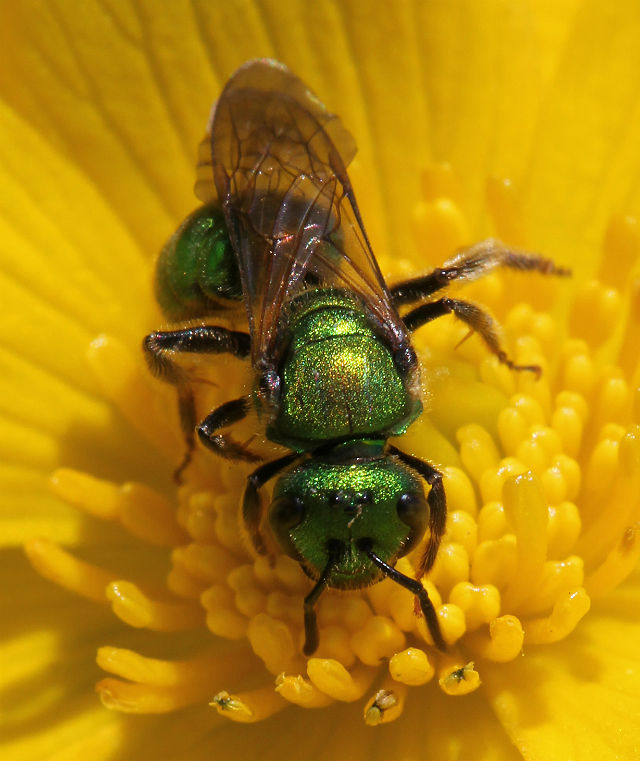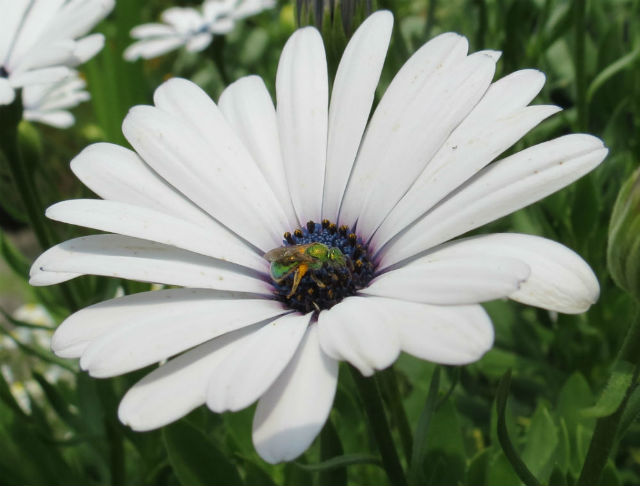It has been rather rainy as of late and the ground is soggy, the air is heavy with humidity – these days are good days to look for fungi.
This decaying tree branch had fallen to the forest floor in Cuyahoga Valley National Park. The bright yellow-orange coloration on it caught my eye. Fan-shaped Jelly Fungus enjoys a practically worldwide distribution.
It has a rubbery texture and lack of gills and is a specialist for growing out of cracks in dead wood, which it feeds on and breaks down into components that can be recycled back into the earth – without this process, wood and other plant matter would not decompose.
The fruiting bodies are less than 7/8 of an inch tall and grow in clusters or rows along cracks in decaying wood; often the wood has lost its bark. Each fruiting body has a curved fan-like shape, thin in cross-section and widening toward the top. They are translucent and bright in color, and are gelatinous to the touch.
In our modern-day, decomposition and decay are often viewed quite negatively, yet they are the yin to the yang of growth, and together they form two halves of the whole that is the closed-loop cycle of natural ecosystems. In Chinese culture, it is called literally “sweet osmanthus ear,” referring to its similarity in appearance to that flower.


